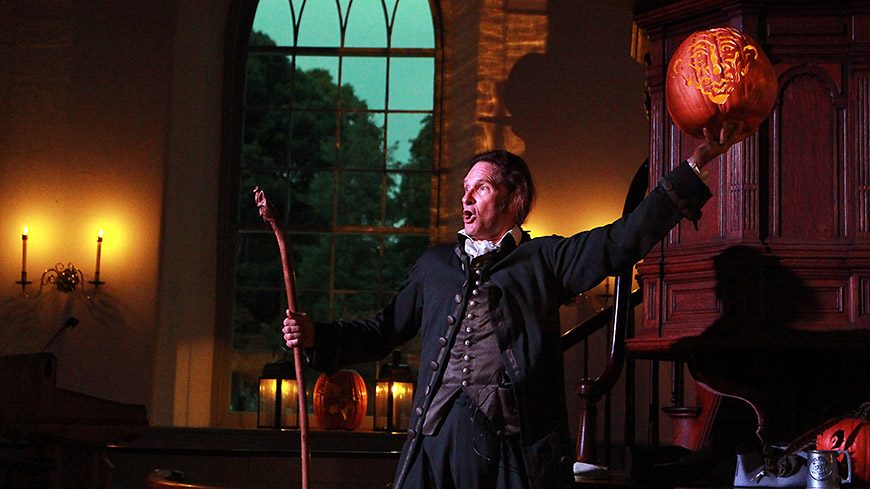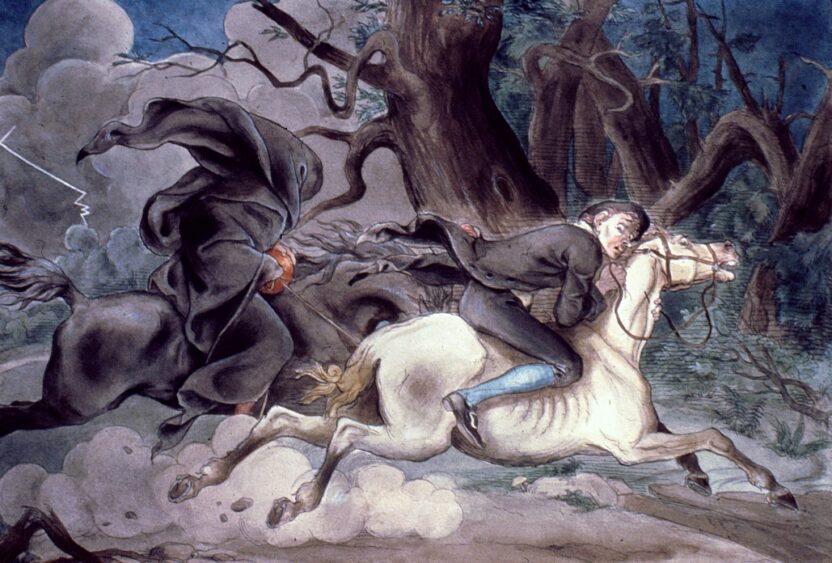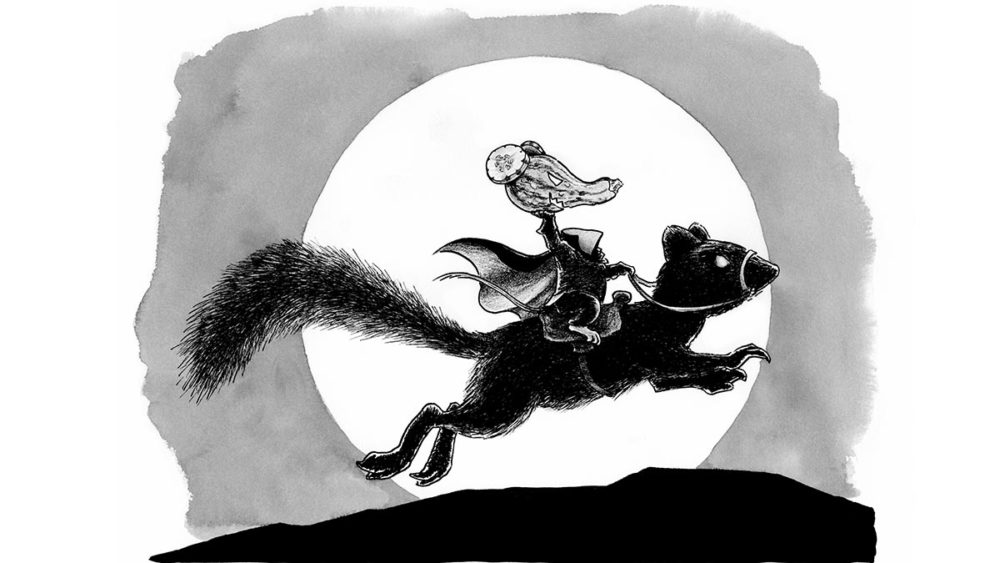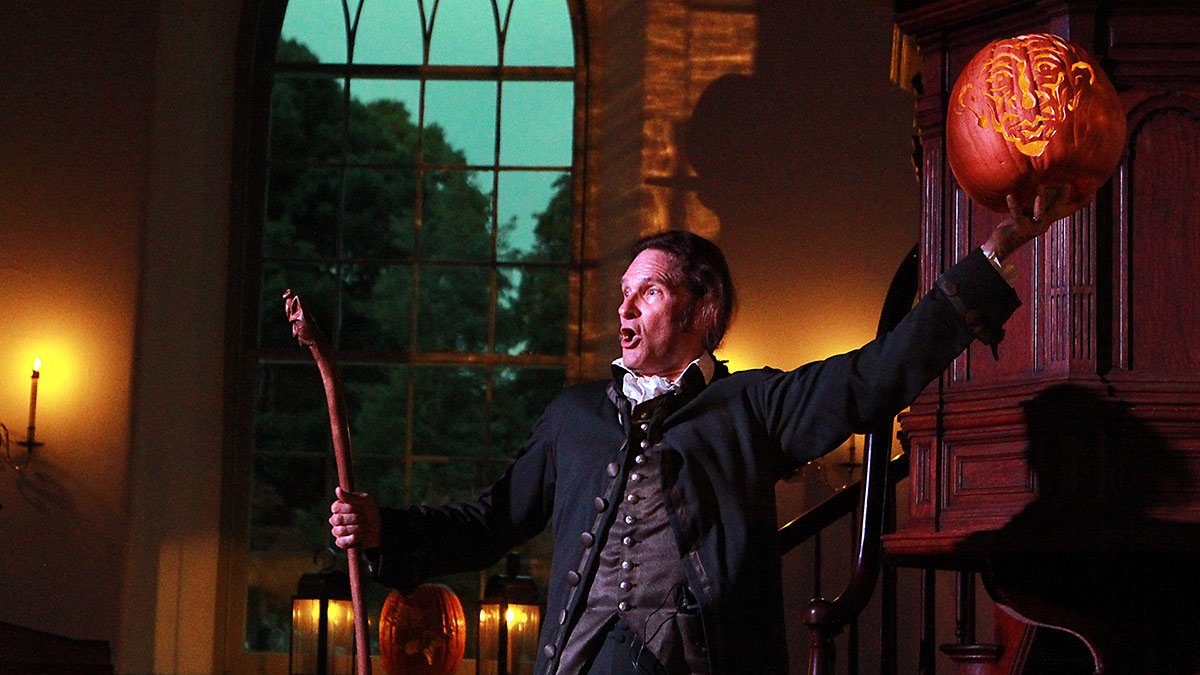Irving’s ‘Legend’: The Story Behind the Story

Beloved by generations of readers, Washington Irving’s “Legend of Sleepy Hollow” ranks among the classics of American literature.
Although it is one of Irving’s shortest works, it has had a long life since it first was published in 1820. For nearly 200 years, the story has captured the imagination of both children and adults. The characters, setting, and events come alive through Irving’s descriptions, and artists of all types have used the story for source material. From shortly after the story’s first publication until today, the story has inspired creative works: illustrations, paintings, sculpture, music, films, television shows, even advertising.
The Story
“Legend” possesses elements of a thriller, but at the heart of the tale is a love triangle set in Sleepy Hollow on the shore of the Hudson River at the turn of the 19th century. Ichabod Crane, an itinerant schoolteacher, falls for Katrina Van Tassel, the pretty daughter of a prosperous local family. Ichabod’s gangling appearance and odd habits, as well as his obvious attraction to Katrina, make him an easy target for Katrina’s other suitor, Brom Bones, the swaggering village “blade” in Irving’s description. Tension builds between Brom and Ichabod until one dark autumn night when Ichabod, riding along a lonely wooded road, finds himself with a ghostly headless companion. Overwhelmed by fear and all the spooky tales he has heard, Ichabod flees, hoping to reach the security of the nearby bridge and churchyard. The horseman gives chase and just as Ichabod reaches safety, the horseman throws what appears to be his head at the schoolteacher. The next day Ichabod cannot be found, but the villagers discover his horse and the remains of a pumpkin, leaving the reader to speculate as to what happened. Was Ichabod’s encounter with a true ghost? Or was he the victim of a cruel prank?
Irving’s inspirations
Irving wrote “Legend” while living in England. Some scholars suggest Irving’s tale may have been inspired by folk stories he heard during his time abroad. German, English and Scandinavian folktales involving a headless rider chasing hapless travelers have been told for many generations. Irving may have heard or read versions of these tales and reimagined his own iteration in the Hudson River Valley setting he knew so well. The author incorporated many local names and details, adding an air of authenticity to his telling. He also claimed that the original text was “found among the papers of the late Diedrich Knickerbocker” who, in turn, heard the tale recounted by a “pleasant, shabby, gentlemanly old fellow” some years earlier. These layers of authorship remind readers of the essential nature of a legend, a story told and retold by tradition and no longer verifiable.
Critical Success
“Legend” formed part of The Sketch Book of Geoffrey Crayon, a set of stories written by Irving and published in installments in 1819 and 1820. Very quickly readers latched on to Irving’s work. Good reviews from Irving’s influential literary friends helped, but critics outside his circle raved too. English critics were favorably impressed that an American author could write so well, and Irving delighted in having upended English literary prejudices. Multiple reprints and editions followed in England and in the United States as well as foreign-language translations.
The early literary success of The Sketch Book helped Irving to build his career as a writer and eventually enabled him to purchase Sunnyside, make improvements to the property and help his family members financially. “Legend” has never been out of print since it first was published. Irving wrote many other works, but arguably “Legend” remains the most popular, perhaps because fans of the story love to be a bit frightened, imagining themselves in Ichabod’s saddle, fleeing for their lives from a headless phantom.
A Part of Popular Culture
Irving makes no mention of Halloween in his tale; rather he set the climax in the evening of a “fine autumnal day.” The ghostly and frightening elements of the tale, however, mean it is now closely associated with the holiday. The link is strengthened by artists who have shown the horseman carrying a scary jack-o-lantern as a head, embellishing what Irving only suggests: that the horseman’s “head” was actually a pumpkin.
Thanks to the wide readership of Irving’s story, now combined with the number of people who know one of the many children’s editions, comic books, animated cartoons, films or television shows inspired by the tale, the characters are well known and easily identified. They have been appropriated and reimagined, and, as a result, have become even further embedded in American popular culture. Through new vehicles and representations, Irving’s tale keeps audiences amused, captivated and terrified after nearly two centuries.
Experience the “Legend” Yourself
Historic Hudson Valley brings Washington Irving’s stories to life. Visit his home at Sunnyside on weekends in October to experience Home of the ‘Legend’ and you’ll learn about the author and see objects related to his most famous story. Or hear master storyteller Jonathan Kruk interpret the folktale at the Old Dutch Church in Irving’s ‘Legend.’











